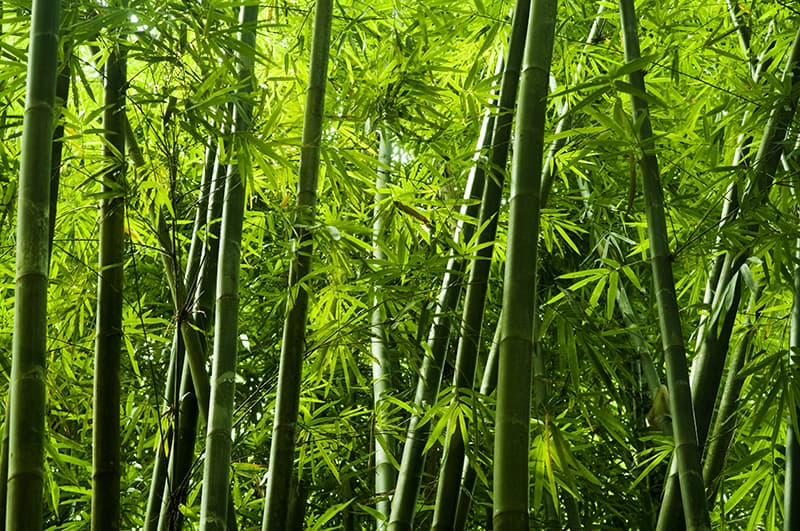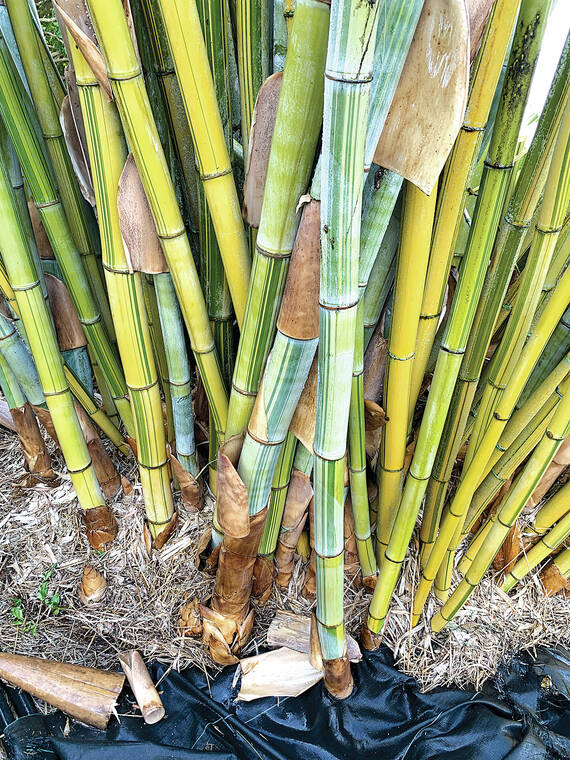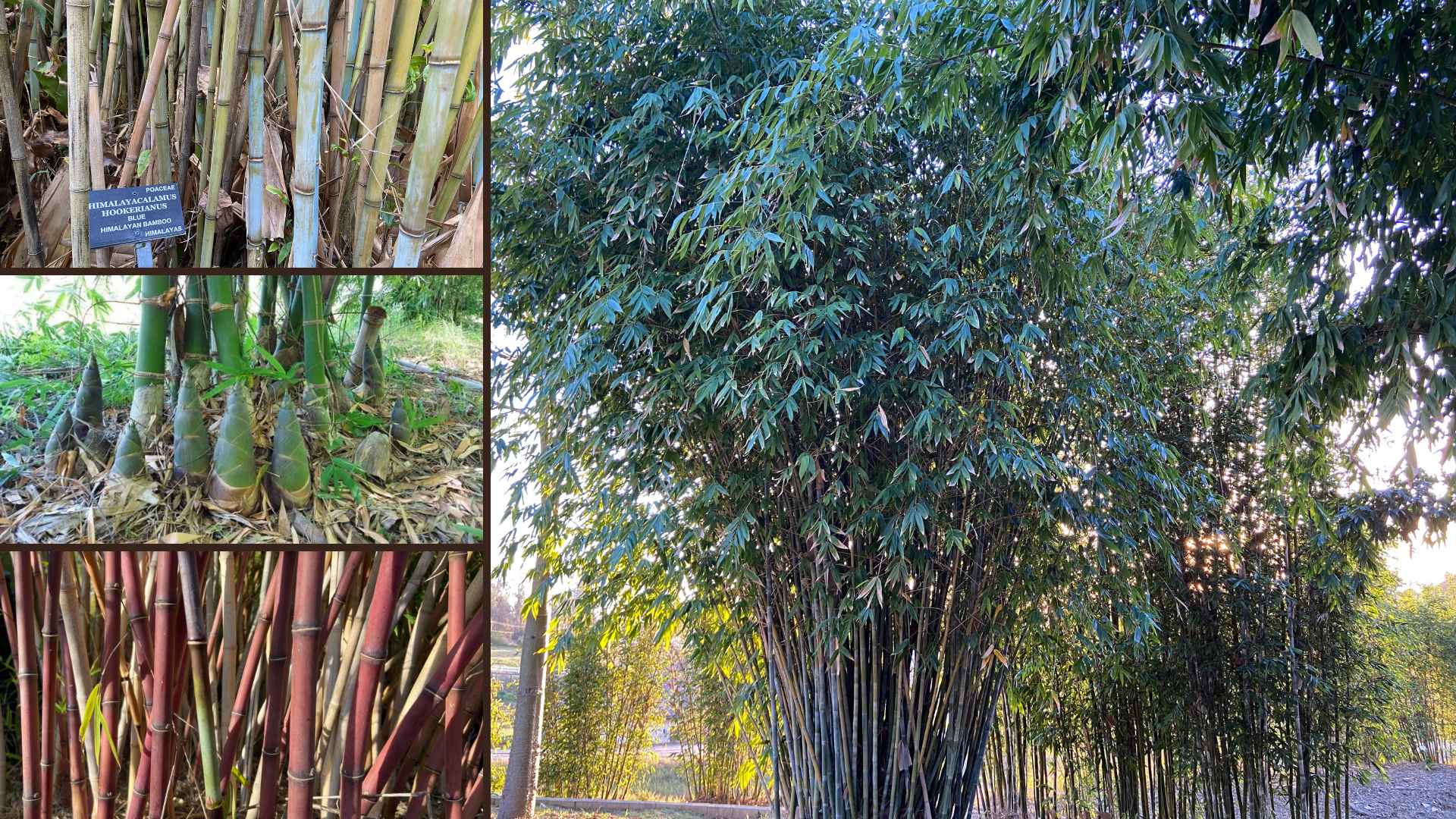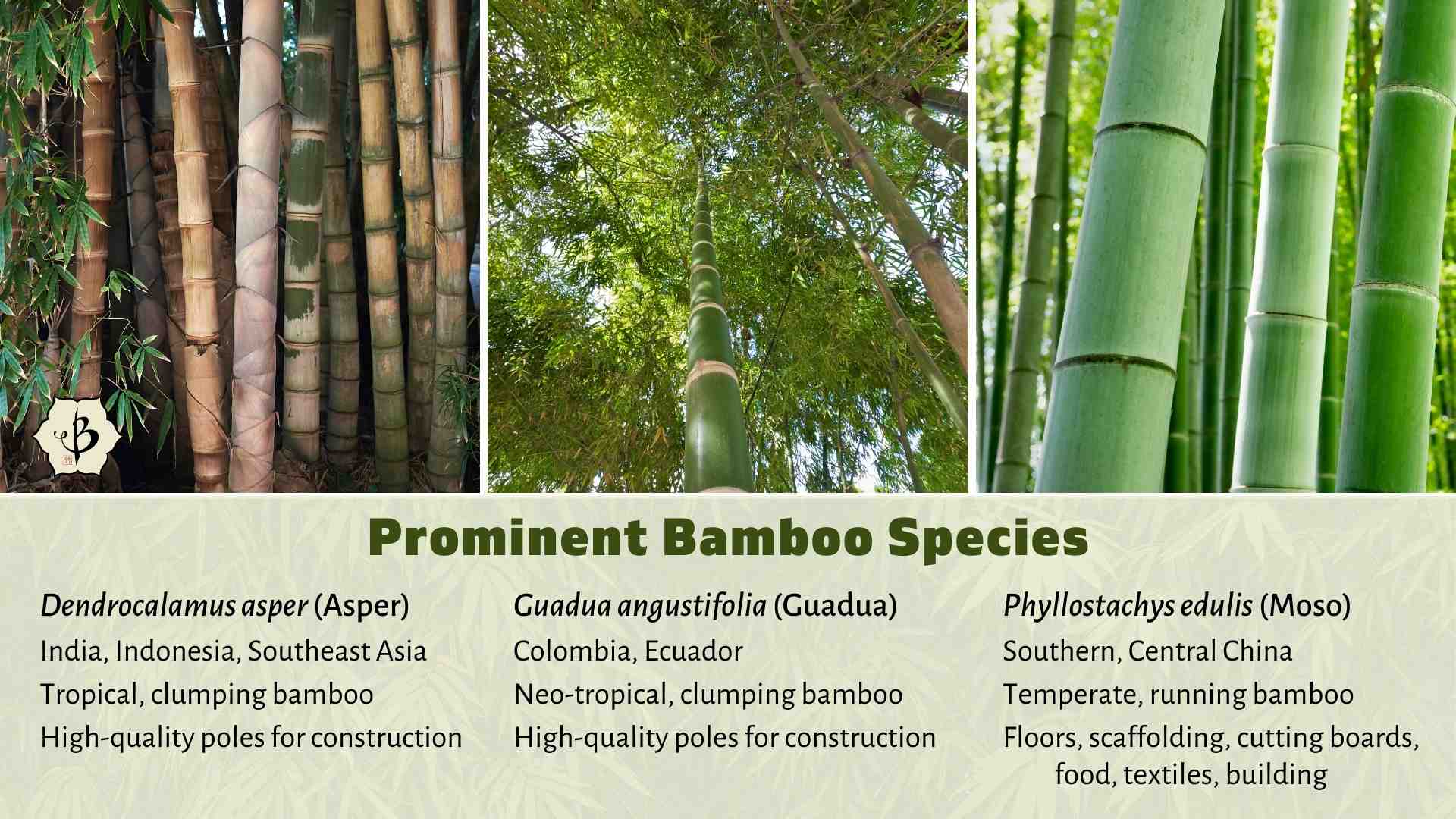Bamboo is celebrated worldwide for its strength, versatility, and sustainability, becoming a staple material across industries from construction to home decor. But, like any natural material, not all bamboo species are created equal in strength. Some bamboo varieties boast incredible resilience, while others are notably weaker, making them better suited for specific, less demanding applications. This article explores the question, “What is the weakest bamboo species?” by diving into the characteristics, uses, and limitations of weaker bamboo species, specifically Bambusa vulgaris, and comparing it to stronger varieties.

Understanding Bamboo Strength
What Defines Bamboo Strength?
Bamboo’s strength is often one of its most celebrated qualities, but what exactly makes some bamboo species stronger than others? Generally, bamboo strength is defined by its compressive strength, tensile strength, and flexibility. These metrics help to establish how much force the bamboo can withstand without breaking, bending, or cracking. To break it down further:
- Compressive Strength: This measures the ability of bamboo to withstand weight or pressure without being crushed. It is especially important in structural uses, where the bamboo might bear significant loads.
- Tensile Strength: This refers to the bamboo’s ability to resist pulling forces without snapping. High tensile strength makes bamboo an excellent choice for construction, as it can handle stretching and bending.
- Flexibility: Bamboo’s flexibility is key for withstanding various forces, especially in regions prone to wind or seismic activity.
Each bamboo species exhibits different levels of these strength metrics, often influenced by factors like age, growth conditions, thickness, and wall density. Older bamboo culms, which are typically 3-5 years old, tend to have greater strength than younger ones, as they’ve had more time to develop denser fibers and harder outer walls.
Why Does Bamboo Strength Matter?
The strength of bamboo matters greatly depending on its intended application. For instance, a bamboo species with high compressive strength is ideal for heavy-duty construction, while weaker species can be suitable for smaller crafts or temporary structures. This difference allows for a wide range of uses, from load-bearing beams in sustainable housing to decorative fencing and garden supports. Here’s a quick look at some common uses for strong versus weak bamboo species:
- Strong Bamboo: Commonly used in scaffolding, flooring, and permanent structures due to its high tensile and compressive strength.
- Weak Bamboo: Preferred for garden structures, temporary decor, and crafts that don’t require durability under heavy loads.
With these differences in mind, we can understand why it’s crucial to identify the weakest bamboo species, especially if you’re considering bamboo for a project that may need to withstand substantial forces. Knowing which species offer less strength helps avoid material failures and guides smarter, safer usage.

Characteristics of Weaker Bamboo Species
What Is the Weakest Bamboo Species?
When identifying the weakest bamboo species, Bambusa vulgaris, also known as common bamboo, stands out as one of the least robust varieties. While it’s widely available and popular in landscaping and gardening, its structural limitations are significant. Unlike tougher bamboo varieties used for construction, Bambusa vulgaris has certain physical traits that reduce its strength. Its larger internode spacing, thinner walls, and relatively low density all contribute to its classification as a weaker bamboo species. Because of this, it’s primarily suited for decorative or low-stress applications rather than heavy-duty structural uses.
Why Bambusa vulgaris Is Considered Weak
The physical characteristics that define Bambusa vulgaris as weak compared to other bamboo species are largely structural. Here’s a closer look at why it falls short in terms of strength:
- Larger Internodes: The distance between each “node” or joint on a bamboo culm affects its stability. Longer internodes, like those found on Bambusa vulgaris, offer less structural support, making the bamboo more flexible but less resilient under heavy loads.
- Thinner Walls: The walls of Bambusa vulgaris culms are thinner than those of stronger species like Phyllostachys edulis (Moso bamboo) or Dendrocalamus asper. These thin walls are more prone to cracking under stress, and they reduce the culm’s ability to support weight or resist impact.
- Lower Density: Density in bamboo is correlated with compressive strength; denser bamboo species can endure more force before breaking. Bambusa vulgaris has a relatively low density, contributing to its inability to bear heavy loads or resist intense pressure.
Comparing Weak Bamboo to Strong Bamboo Varieties
To better understand where Bambusa vulgaris stands, let’s compare it to some of the stronger bamboo species. Below is a table that highlights key differences:
| Bamboo Species | Compressive Strength (MPa) | Tensile Strength (MPa) | Wall Thickness | Typical Use |
|---|---|---|---|---|
| Bambusa vulgaris | ~50 MPa | ~130 MPa | Thin | Decorative, garden stakes |
| Phyllostachys edulis | ~105 MPa | ~250 MPa | Medium | Flooring, furniture |
| Dendrocalamus asper | ~120 MPa | ~300 MPa | Thick | Scaffolding, construction |
| Guadua angustifolia | ~150 MPa | ~350 MPa | Very Thick | Heavy-duty construction |
As shown in the table, Bambusa vulgaris has a compressive strength and tensile strength significantly lower than stronger species like Dendrocalamus asper. These metrics make it clear why Bambusa vulgaris is unsuitable for applications requiring high durability.
The weaker properties of Bambusa vulgaris make it a great choice for ornamental use, as it offers aesthetic appeal without the need for high resilience. However, if you’re looking for bamboo to bear weight or endure substantial wear, choosing a higher-strength species is crucial.

Uses and Limitations of Weak Bamboo Species
Applications for Weaker Bamboo Varieties
Despite its limited strength, Bambusa vulgaris and other weaker bamboo species have valuable applications where durability is not the main priority. Because of its lighter structure and aesthetic appeal, Bambusa vulgaris is widely used in gardens, landscaping, and crafts. Here are a few ideal uses for weaker bamboo species:
- Ornamental Landscaping: Due to its bright green or yellow-striped appearance, Bambusa vulgaris is popular in garden and landscape design. Its fast growth makes it a suitable choice for quickly creating natural screens or adding tropical elements to gardens.
- Low-Impact Crafts and Furniture: Weaker bamboo like Bambusa vulgaris can be easily bent and shaped, making it useful for creating small crafts, baskets, and lightweight furniture. While it may not be suitable for weight-bearing furniture, it works well for decorative pieces.
- Temporary Structures: Weaker bamboo is sometimes used in temporary structures or scaffolding, especially in regions where bamboo is abundant. However, this usage is limited to situations where durability is less critical, and it’s typically reinforced or combined with stronger materials.
- Garden Stakes and Plant Supports: In gardening, Bambusa vulgaris is commonly used as a support for climbing plants and vegetables. Its lightweight and hollow structure make it easy to handle and cut, perfect for staking plants without adding unnecessary bulk.
Limitations and Risks of Using Weak Bamboo in Construction
While Bambusa vulgaris has its uses, it’s essential to recognize its limitations, particularly in applications where strength is required. Using weak bamboo in scenarios demanding high durability can lead to structural failures and safety risks. Here’s why:
- Load-Bearing Issues: In construction, materials must withstand compressive and tensile forces. Because Bambusa vulgaris has a lower compressive and tensile strength than other species, it cannot support substantial weight. Using it in place of stronger bamboo could lead to material collapse, especially under heavy loads.
- Prone to Cracking and Splitting: The thin walls of Bambusa vulgaris make it vulnerable to cracking, especially under pressure or in dry conditions. This makes it unreliable in applications where stability and longevity are required.
- Environmental Degradation: In humid or outdoor conditions, weaker bamboo is more susceptible to degradation from pests, fungi, and moisture. While bamboo is naturally resilient, weaker species require more frequent maintenance or treatment to withstand environmental wear.
- Safety Concerns: In applications like scaffolding or furniture, there is a risk to safety if the material fails under stress. For this reason, Bambusa vulgaris is rarely used in construction-grade applications unless reinforced or treated.
Case Example: Decorative Bamboo Fencing
Consider a situation where you want to build a bamboo fence for your garden. Using Bambusa vulgaris would create a visually appealing, lightweight fence that’s easy to assemble and adjust. However, if this fence were needed for security or high wind resistance, it might not hold up well without additional reinforcement. For decorative purposes, weak bamboo is ideal—but it’s essential to recognize these limits to avoid disappointment or safety issues.
Weaker bamboo species have unique uses but must be carefully selected based on their limitations. For applications where strength is non-negotiable, it’s wise to consider sturdier alternatives.

Identifying Weak Bamboo Species in the Wild
Visual Identification of Weak Bamboo Species
Recognizing weak bamboo species, like Bambusa vulgaris, can be helpful if you’re selecting bamboo in its natural setting or sourcing bamboo from local suppliers. Bambusa vulgaris has several distinct features that make it easy to identify:
- Internode Length and Thickness: The culms, or stalks, of Bambusa vulgaris have longer internodes than other bamboo species, giving them a more spaced-out appearance. These internodes tend to be thinner-walled, giving the bamboo a less robust structure overall.
- Color and Aesthetic Variations: Common bamboo often appears in a bright green color, although a popular variant, Bambusa vulgaris vittata, has striking yellow stripes running vertically along the culm. This color variation makes it a popular choice for ornamental gardens, adding a tropical aesthetic.
- Average Height and Growth Patterns: Bambusa vulgaris typically grows to heights of around 12–20 meters, which is shorter than some of the more resilient species like Dendrocalamus asper or Phyllostachys edulis. The culms are usually clustered together, with a relatively open and spread-out clump pattern, making it identifiable in tropical regions.
Other Bamboo Species with Similar Weaknesses
Although Bambusa vulgaris is the most well-known weak bamboo species, a few others share similar properties. Bambusa tulda and Bambusa multiplex are also used in gardening but are not known for their strength. These species are generally lightweight and more prone to splitting than robust varieties, limiting their use to non-structural, decorative, or temporary applications.
Natural Habitat and Growth Patterns of Bambusa vulgaris
Bambusa vulgaris thrives in tropical and subtropical climates, where high rainfall and warm temperatures create ideal growing conditions. It’s commonly found in Southeast Asia, Africa, South America, and parts of Central America. This bamboo species is especially common at lower altitudes and near water sources, where soil moisture is abundant.
The growth patterns of Bambusa vulgaris contribute to its structure and, ultimately, its lower strength:
- Rapid Growth: This species grows quickly, sometimes reaching full height within a single growing season. However, this rapid growth often results in weaker, less dense fiber structures, contributing to its lower strength.
- Clumping vs. Running Habit: Bambusa vulgaris is a clumping bamboo, meaning it grows in tight clusters rather than spreading out via runners. This habit makes it easier to manage and control in gardens, but it also means the culms compete for nutrients and may not develop the density seen in running bamboo varieties like Phyllostachys species.
In understanding the natural growth and habitat of Bambusa vulgaris, it’s clear why this species develops differently from stronger varieties. Its fast-growing nature and tendency to clump limit the development of thicker, more resilient culms, making it ideal for aesthetic applications but less suited for structural needs.